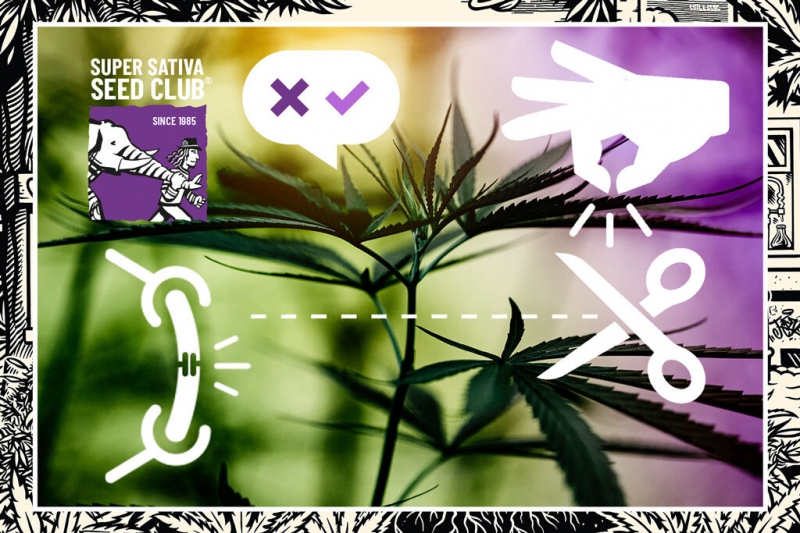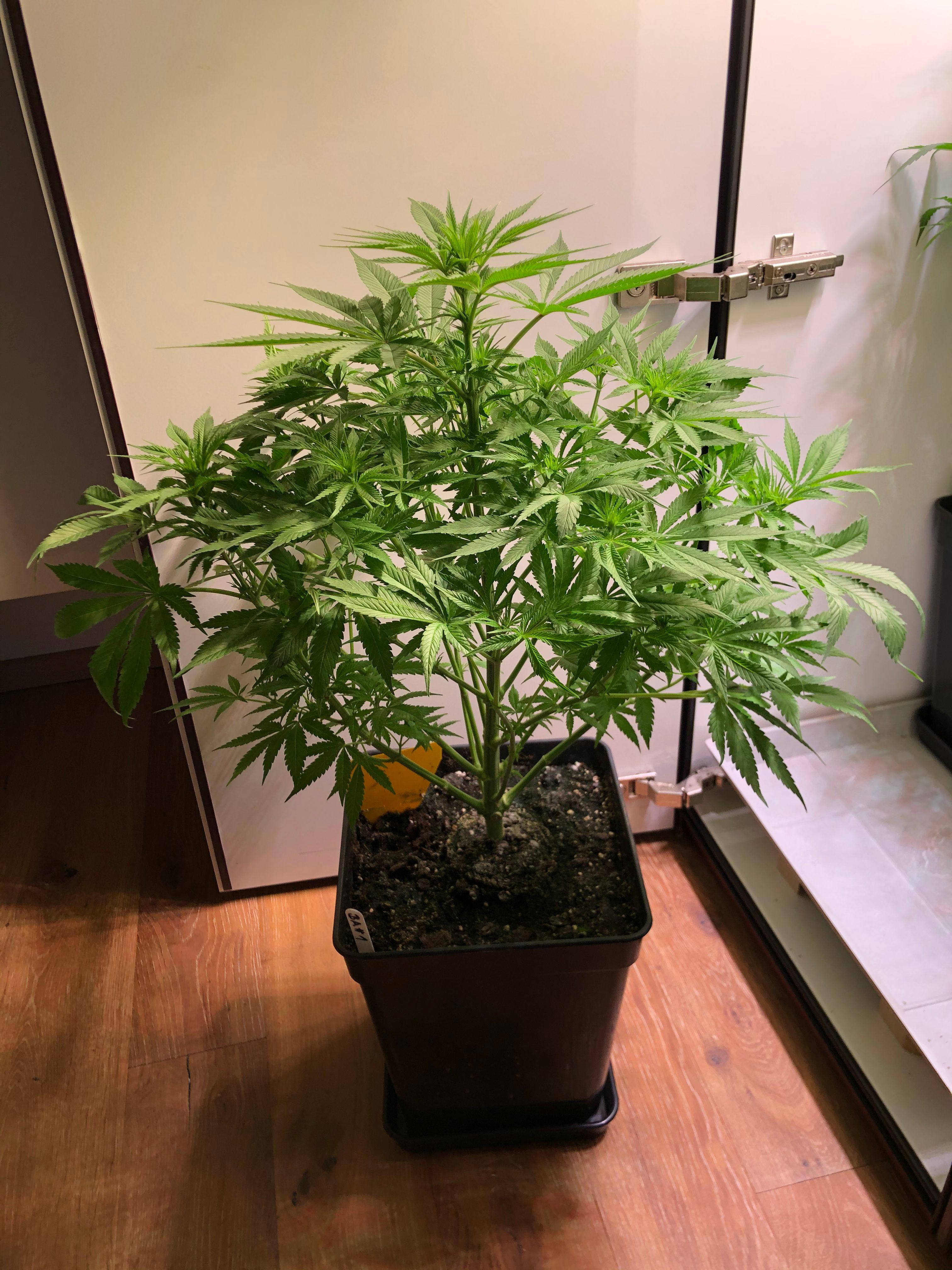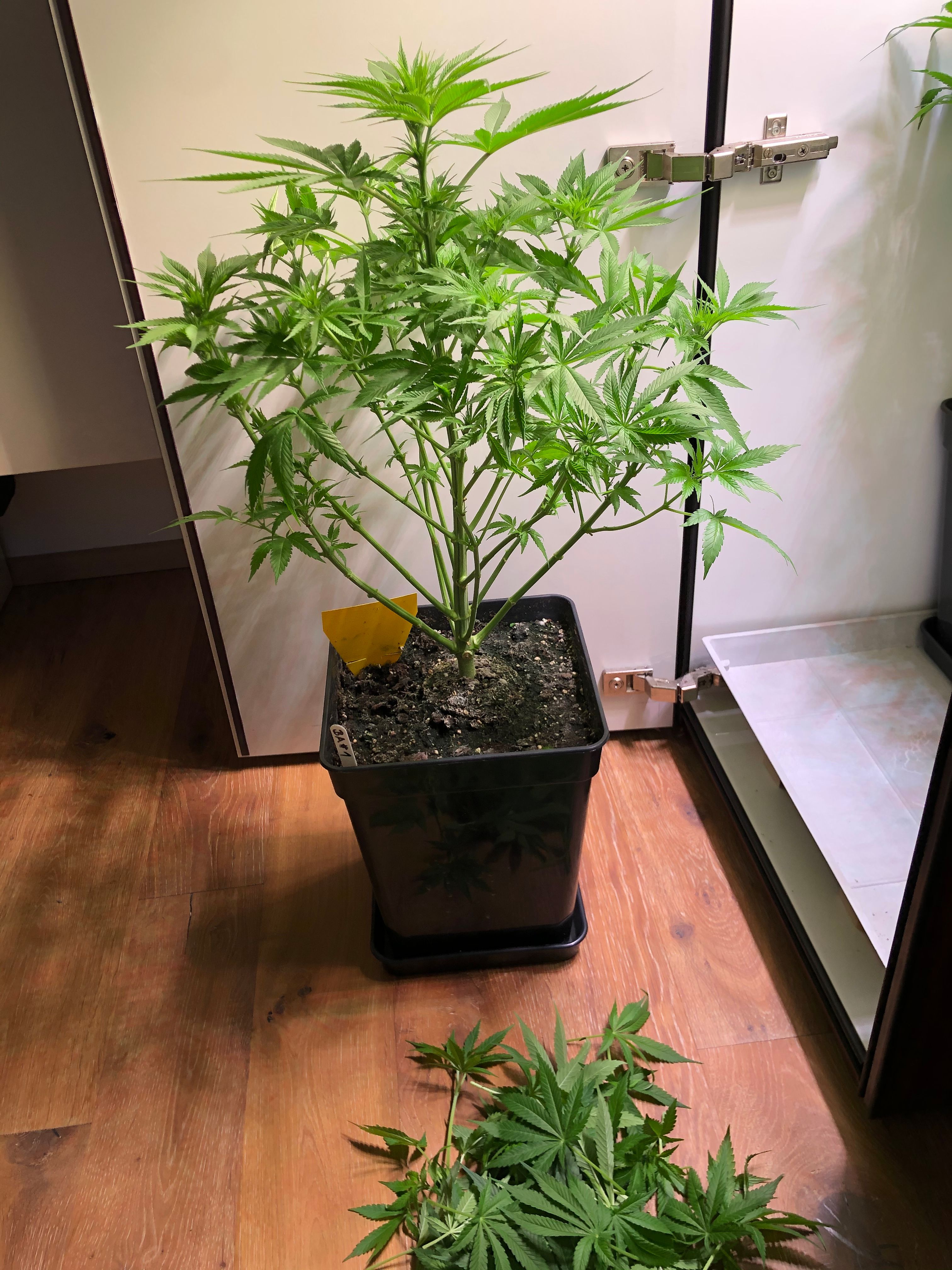
Hi, SSSC-Growers!
Today we will focus with our SSSC Do’s and Dont’s on the second half of the growth period or vegetative phase (called veg. in short). At the time period when the plant is in her final pot and grows to a full grown plant ready to switch to flowering.
The SSSC Do’s and Don’ts Nr.3:
Do’s and Don’ts for the second half of veg.:
DO:
- Support your plants
- Defoliate your plants
- Supercropping
DON’T:
- Top your plants
- Let your medium dry out
Support your plants, especially the tall growing ones:
After being repotted a cannabis plant will grow quickly in size and diameter. The lowest side-branches will grow outwards and try to reach up towards the grow lights. Some strains (mostly sativa strains) grow taller than others and have a bigger internode distance than other strains (mostly indica strains), who grow more compact and bush out more. The internode distance is the distance in height on the main-stem between the points where the side-branches grow out, the so called ‚nodes‘ of the plant. As a rule of thumb, Sativa dominant strains tend to have longer internode-distances and grow taller than Indica dominant strains! Since later in flowering the main weight of the buds will be on the top of each branch, they need to be able to support the weight without bending or breaking off. Therefore it is best to support your tall growing plants already at the end of the veg. with stakes (e.g. bamboo or wood gardening stakes) or a trellis (= a wide netting). This will later hold up the main- and the side-branches and enable them to lean onto the stakes or the netting for support when they are very top-heavy in flowering. If you wait too long and add the support during flowering, you will have to touch your flowering plants and accidently loose lots of trichomes while doing so.
Defoliate your plants:
After a few weeks of growing a cannabis plant will have developed a lot of foliage (=side-branching and leaves), which can grow very dense, depending on the particular genetics of the cannabis strain. The upper parts (especially the big fan leaves) will shadow the lower parts of the plant, which in turn will develop slower, since they get less light for photosynthesis. The canopy of leaves will create a horizontal screen, where almost no air can flow through, which can cause humidity to rise and this invites mold. Therefore its best to defoliate the plant after appr. 3-4 weeks of growing. You can take off almost all big fan leaves (either pinch them off with your finger nails or use a small scissor) and also cut off the lowest two to four side-branches growing out of the stem. Those low branches don't grow tall enough to get enough light and then only develop tiny buds in flowering. It is a waste of energy for the plant. If you take the lowest branches off, the upper branches will grow stronger and develop more and bigger buds instead. Once the lowest branches and almost all big fan-leaves are gone, your should continue to take off smaller fan-leaves, especially ones that touch each other. Touching leaves will start to ‚sweat’, which means the humidity that evaporates out of one leaf, will immediately condensate on the other leaf. A little film of water will develop where the leaves touch and this again will attract mold, which should be avoided at all cost.
As a rule of thumb you should continue to take off leaves until a vertical air-flow is possible. The easiest way to check this, is to look at your plants from the top-view. If you look down on the plants from right above them, you should be able to see through the canopy down to the floor on some spots. If you only can see a screen of leaves and no floor, you should continue to take off leaves. Do not take off too much as well, the plant still needs a good part of her fan-leaves for photosynthesis! If you take off too many leaves the plant will develop less buds later in flowering. You have to try to find a good middle way, after a while you will get a good feeling on how many leaves you should take off.
Before defoliation

After defoliation

Supercrop your plants or top them:
Since some cannabis plants will grow taller than others (see above), its sometimes necessary to control the height of the taller ones in order to get an even canopy. When a plant grows much taller than the others, she will grow into the grow light above the plants. In order to avoid hanging the lamp higher and therefore increasing the distance to the smaller plants, its better to control the height of the tall one. You can either top the plant, which means to simply cut off the main branch right above an internode, so she has the same height as the smaller plants again. This means that you loose the main branch and therefore also loose the big main head-bud, that will grow there later in flowering.
An other option to control the height is ‚SUPERCROPPING‘ the plants. Here is how we ‚supercrop‘ a plant:
Appr. 15-20 cm from the top of the plant, right above an internode, we take the main stem between two fingers and press very hard until we can feel the fibers inside the stem brake. By slowly pressing all around the diameter of the stem we create a weak spot at which we bend over the stem, so it looks 90-180 degrees downward. We do this very carefully to not brake the outer skin of the stem while we bend the stem downwards. Even if some fibres brake, the stem will repair itself within a few days to a week and then start to point upwards again. During the time the main stem needs to repair itself, all other side-stems will grow more upwards and this makes the plant bush out more. At the same time a supercropped plant will produce bigger buds at harvest time, than a plant where you did not do that. Somehow the plant reacts to being hurt by getting stronger and producing more. We also do not loose the main head-bud this way, since the top of the main branch can continue to grow and will develop lots of bud later in flowering.
Do NOT let your soil dry out too far: —> dont let your plants hang ;)
Cannabis is a very hardy plant and can endure a lot of stress without being affected. She can grow in very dry conditions (e.g in Nepal in the mountains of the Himalaya) and also in very humid and wet conditions (e.g. in India at sea-level). Indoors it is best to water the growing medium (e.g. soil) on a regular basis and make the soil good wet, so the pot feels heavy when you lift it. Then you should let the soil dry up until the pot feels light when you lift it and then water again. This will ensure your roots will develop properly and can get enough oxygen as well. Be careful and do not let the soil get too dry! After a while of drying up, the soil will start to shrink. You can see this at the edge of the soil next to the wall of the pot, if there is a small gap your soil has dried out too far and started to shrink in. A sure sign that your soil has dried out much too far, is your plant hanging. When the plant starts to let her leaves hang down and later even the sidebranches get limp and start to hang, then you know for sure your soil is too dry. This should be avoided at all cost.
When this happens you simply have to carefully water the plant right away. First a little bit, so the soil starts to take up water again, and then more. The plant will restore herself even from this state of wilting, when you water her carefully, she will lift the branches and leaves up again and continue to grow, but she will have suffered a lot and sometimes develop less buds later in flowering. Therefore it is best to keep an eye on the soil and water again on time before the soil gets too dry.
We hope our tips will help you to grow your SSSC-seeds to the max and we will continue with the switch to flowering in our following article.
(4355) (0)

